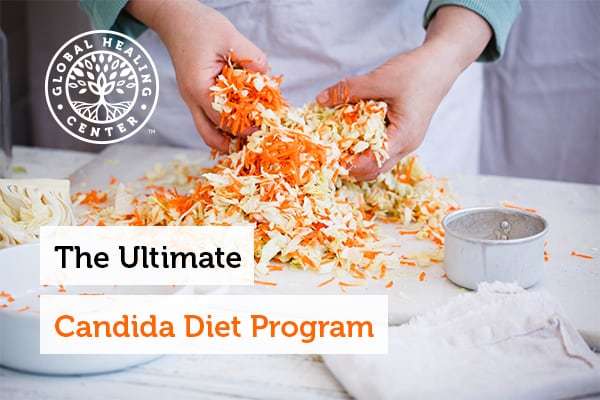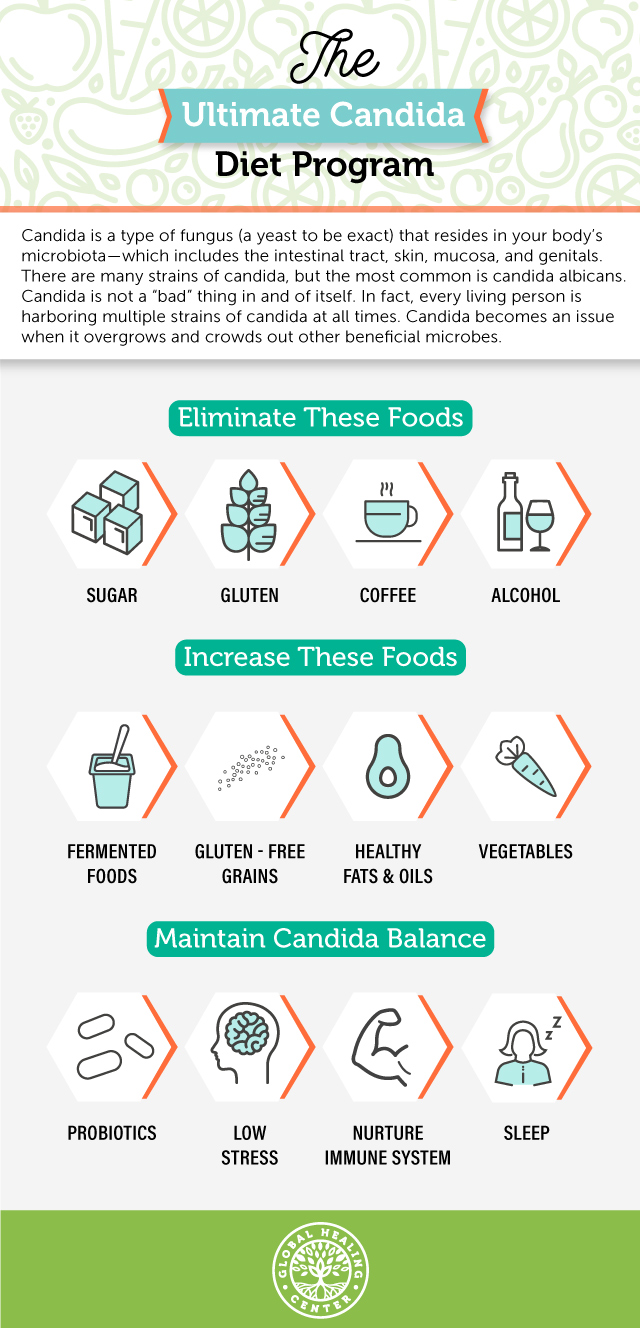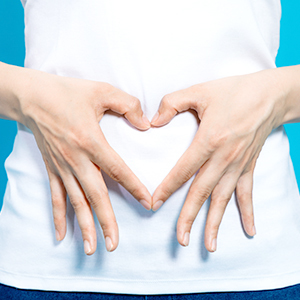
Ten years ago, few people knew about the significance of Candida overgrowth, let alone the health benefits of embarking on a Candida diet program. But today, thanks to new attitudes on the detriments of excess sugar consumption and a growing interest in natural health and nutrition, more and more people are asking about diet as a way to cleanse your body of Candida. Here we’ll explain everything you should know, so you can determine if a Candida diet is right for you.
What Is Candida?
Candida is a type of fungus (a yeast to be exact) that resides in your body’s microbiome — which includes the intestinal tract, skin, mucosa, and genitals.[1] There are many strains of Candida, but the most common is Candida albicans.[2]
Candida is nothing new. Candida is not a "bad" thing in and of itself. In fact, every living person is harboring multiple strains of Candida at all times. Candida becomes an issue when it overgrows and crowds out other beneficial microbes. When this happens, it disrupts the balance of beneficial bacteria, fungus, and yeasts in your gut microbiota, resulting in symptoms, ranging from mild to severe.
What Causes Candida Overgrowth?
The main factors that lead to Candida yeast overgrowth include:
- A weak immune system[1, 3]
- Antibiotic use[3, 4]
- Steroid use[3, 4]
- Chronic stress[5]
- Overconsumption of sugar and starches[6]
- Excessive alcohol use[2]
- Diabetes[7]
- Surgery and time spent in an intensive care unit[8]
- Use of the birth control pill[9]
Common Symptoms of Candida Overgrowth in Men and Women
Sugar cravings are the most common symptom of Candida overgrowth, and the reason is that sugars and refined starches (AKA carbohydrates) are Candida’s preferred source of fuel.[10] Other common symptoms include:
- Fungal infections of the skin, throat, esophagus, and blood[11]
- Leaky gut syndrome[12]
- Chronic yeast infections[9]
- Mood swings and mental health issues (due to the disturbance of the gut bacteria)[13]
- Weakened immune system[3]
- Psoriasis and eczema[14]
The Candida Diet Plan: Your Best Defense Against Candida Overgrowth
The best natural way to overcome Candida overgrowth and restore balance in your gut is to abide by a Candida diet plan coupled with specific natural remedies. The Candida diet is a simple, sugar elimination diet that restricts sugars, starches, and a few other foods, while still offering a great variety to choose from.
The Candida diet works by "starving" the excess Candida and taking away their primary food sources (namely sugars), while simultaneously rebuilding your gut microbiota with nourishing, probiotic and prebiotic-rich foods. Although you won’t go hungry on this diet, there are some foods that you’ll want to avoid. Let’s take a look at some of those foods.

The Candida Diet Plan Part 1: Foods to Avoid
Though there is much to be said about bending the rules when it comes to traditional "dieting" (a practice I don’t recommend), in a Candida diet these rules must be followed to achieve results. When you’re done with the diet and your Candida is in check, you can go back enjoying a more flexible eating routine.
1. All Sugar and Artificial Sweeteners
Since sugar is Candida’s preferred food source, removing sugar is the most vital key to your success. The same goes for artificial sweeteners. Artificial sweeteners are not allowed as they often contain harmful chemicals or allergens. They have been linked to a slew of health issues including weight gain, diabetes, and heart disease.[15] The list of sugars and artificial sweeteners to avoid includes:
- All artificial sweeteners, including sugar alcohols
- Barley malt
- Brown rice syrup
- Brown sugar
- Cane sugar
- Coconut sugar
- Date sugar
- Honey (even raw, which I normally recommend, but not when it comes to Candida)
- Maple sugar
- Maple syrup
- Molasses
- Muscovado sugar
- Palm syrup
- Panela sugar
- Rapadura sugar
- Sucanat
- Sugar-containing foods including sauces, beverages, etc.
- Tapioca syrup
- Turbinado sugar
- White sugar
2. Gluten and Gluten-Containing Grains
Though some experts recommend removing all grains while on a Candida cleanse, I allow gluten-free grains because of their nutritional value. The gluten-containing grains to avoid include:
- Barley
- Bulgur
- Durum
- Einkorn
- Kamut
- Rye
- Semolina
- Spelt
- Triticale
- White and whole wheat
Some grains are approved for the Candida diet and we’ll cover those later on. Additionally, watch out for products that contain gluten, such as soy sauce, cereals, prepared and packaged sauces, and other packaged goods. Look for labels that indicate the product is gluten-free.
3. Refined Vegetable Oils
Though fats do not feed Candida, the following types of fat are high in pro-inflammatory omega-6 fatty acids. These fatty acids, when consumed in excess, can cause inflammation which has been shown to irritate the digestive tract and delay healing, leading to more Candida overgrowth.[16, 17] The following processed, highly refined oils should be avoided while on the Candida diet (if not all the time):
- Canola oil
- Corn oil
- Cottonseed oil
- Grapeseed oil
- Hydrogenated fats or partially hydrogenated fats
- Margarine or fake butter spreads
- Peanut oil
- Safflower oil
- Soybean oil
- Sunflower oil
- Walnut oil
4. Non-Cultured Dairy Products
Dairy products, including milk, cream, and cheese, contain the milk sugar known as lactose, another food source for Candida. I recommend staying away from most dairy during this cleanse, and in general. However, there are some allowable dairy products on this diet for those without dairy sensitivities which I’ll cover in another section.

What Foods Make Candida Worse?
Length: 2 minutes
5. Alcohol
Alcohol contributes to Candida overgrowth and is therefore not allowed on the Candida diet.[4]
6. Peanuts, Cashews, Pecans, Walnuts, or Pistachios
Though other nuts are allowed on the program, these five are known to contain molds and fungus which can worsen Candida overgrowth.
7. Coffee
Since coffee can irritate the gut lining it is best to eliminate it from your diet. However, if one cup of coffee a day (without sugar or cream) is enough to keep you going on this diet, go ahead and have it with the goal of phasing it out week-by-week. Keep in mind that once you get through that first week or two, you will have gained back so much energy you likely won’t miss the coffee. If you’re ready to go cold-turkey, we’ll cover some alternatives in the next section.
The Candida Diet Plan Part 2: Allowed Food
Now that the "can’t" foods are out of the way, let’s get to the good news: what you can eat on the Candida diet.
1. Gut-Supporting Superfoods
Success in your Candida diet is as much about what you take out of your diet as what you put back in your body. The following fermented foods will help replenish your microbiome with good bacteria in the form of probiotics and prebiotics:
- Sauerkraut
- Cultured vegetables
- Kimchee
- Kombucha
- Naturally fermented, non-alcoholic beverages
- Non-dairy yogurt without sugar
- Kefir
- Non-soy miso
- Beet kvass
2. Gluten-Free Grains
As mentioned above, certain gluten-free grains are allowed because they contain nutrients, protein, and fiber, which will keep your colon moving.
Look for these gluten-free grain flours in the gluten-free section of your grocery store:
- Quinoa (whole grain and flour)
- Millet (whole grain and flour)
- Buckwheat (whole grain and flour)
- Tapioca flour
- Coconut flour
- Amaranth (whole grain and flour)
- Almond meal (though not a grain, I am listing it here as it is a great grain alternative for breading, baking, etc.)
3. Healthy Fats and Oils
Despite their formerly controversial reputation, new research has confirmed healthy fats are not the enemy and play an essential role in keeping us full, synthesizing key vitamins, and keeping our hormones in balance.
You may enjoy the following healthy fats on the Candida diet:
- Avocado oil
- Avocados
- Coconut oil (which contains anti-fungal properties and has been shown effective against Candida)[18]
- Extra virgin olive oil
- Omega-3 rich oils; look for plant-based options
While I recommend avoiding dairy (and this means no butter), if you do partake in dairy, ghee has a milder effect on your digestive system as the lactose has been removed.
4. Vegetables
You can enjoy unlimited amounts of fresh vegetables while on the program. While some programs recommend staying away from starchy vegetables, I allow them as they contain a wealth of nutrients and fiber and are alkalizing to your system. Don’t forget about sea vegetables, which are rich in minerals and iodine.
5. Fruit
Though there is some debate over whether fruit should be included on the Candida diet, I recommend consuming some fruit while on the Candida diet, provided you eat it in conjunction with your body’s biological rhythms.
By that, I mean that fruit should be eaten by itself in its whole, fresh state (do not combine it with other non-fruit foods), and wait thirty minutes to one hour before eating anything else.
This is important because consuming fruit sugar alone causes it to alkalize your bodily fluids while providing essential nutrients, which helps kill Candida overgrowth. Conversely, if you consume fruit with other foods, such as starches or proteins, it turns to glucose which feeds Candida.
In a nutshell: fresh, whole fruit eaten by itself in the morning is anti-Candida; fruit eaten with other foods feeds Candida. Be sure to avoid fruit juice, canned fruit (which typically has added sugar), and dried fruit (which have a concentrated sugar content).
6. Healthy Proteins
Protein provides the building blocks for growth and repair and is therefore important while on the Candida diet. The key with protein is choosing quality over quantity. I prefer plant-based sources of protein. Beans and legumes are allowed (except for peanuts, which are a legume). However, pay attention to how your body feels as the sugars found in beans can feed Candida in some cases, especially in the early stages.
If this is an issue, substitute other high-protein foods like quinoa, millet, hemp protein powder, nuts and seeds, and cultured soy products like tempeh (since the culturing breaks down sugars).
7. Dairy and Milk Products
Though I recommend avoiding most dairy products while on the Candida diet, cultured organic dairy products (ideally from pasture-raised cows, goats, or sheep) are allowed, as the culturing process naturally reduces the milk sugar, lactose, while adding probiotic value. Organic dairy will ensure you are feeding your body with the healthiest option.
Non-dairy milk products are also allowed (except cashew milk and soy milk), provided they are unsweetened:
- Yogurt
- Kefir
- Cultured butter
- Cultured cheeses
- Unsweetened coconut milk
- Unsweetened almond milk
- Unsweetened hemp milk
8. Nuts and Seeds
Enjoy all nuts and seeds, preferably raw, soaked, or sprouted, except for peanuts, cashews, walnuts, and pistachios which commonly contain mold and fungus. Nut butters are fine, provided they do not contain any added sugars. Remember that chia and hemp seeds are also great sources of healthy fats and protein.
9. Beverages and Coffee Substitutes
Staying hydrated is one of the key components for success when you’re following the Candida diet. Aim to drink half your weight in ounces per day to speed elimination and promote efficient cleansing. You can also add a tablespoon of raw apple cider vinegar to the water to help alkalize the body and promote healthy detox.
Replace alcoholic beverages with probiotic-rich beverages like kombucha or kefir water. Again, water should be the main thing you consume but for a little variety, try unsweetened cranberry juice mixed with water and a bit of stevia or homemade stevia lemonade. Just mix the juice of 1 lemon or lime with 8 ounces of water and stevia to taste.
In place of coffee, try yerba mate, which contains a little caffeine and loads of antioxidants. Chicory coffee is another popular coffee substitute. A lot of people also enjoy herbal teas. Peppermint and nettle provide a natural, refreshing boost, while Pau d’arco, cinnamon, and turmeric teas will help support normal Candida balance.
Supplements to Support Your Candida Diet Cleanse
Although a healthy eating plan is the best strategy for achieving Candida balance and general good health, there are a few supplements I recommend to help support your Candida detox:
- Candida Balance — a blend of herbs like wildcrafted jatoba bark and pau d’arco bark, and enzymes formulated to support normal Candida balance and cleansing.
- A probiotic and prebiotic supplement, like Global Healing's Ultimate Probiotic, which contains a blend of strains.
- An oxygen-based intestinal cleanser, like Oxy Powder®, to facilitate cleansing and detoxification.
How Long Should You Follow the Candida Diet?
How long you should follow the Candida diet depends on your symptoms, health history, the severity of the Candida overgrowth and how faithfully you follow the diet and supplement recommendations.
The general recommendation is one-month minimum, then slowly reintroduce foods and see how your body reacts. If your issues flare up again, go back on the diet for another two to four weeks or consult your healthcare practitioner.
How to Maintain Candida Balance for Life
Since it exists naturally in our bodies, Candida is always going to be part of our lives. The key to living with it healthfully is to prevent overgrowth from happening in the first place.
- Avoid antibiotics as much as possible, and if you must take them go on the Candida diet afterward and take plenty of probiotics and prebiotics.
- Eat a sensible diet that’s low in sugar, refined grains, and processed foods.
- Nurture your gut’s bacterial balance by eating probiotic and prebiotic-rich foods regularly.
- Enjoy alcohol in moderation, or, better yet, avoid it entirely.
- Keep your stress levels in check.
- Get enough sleep.
- Nurture your immune system
References (18)
- "Fungal Diseases." Centers for Disease Control and Prevention, Centers for Disease Control and Prevention, 7 Aug. 2017.
- Kim J., Sudbery P. "Candida albicans, a major human fungal pathogen." J Microbiol. 2011 Apr;49(2):171-7. doi: 10.1007/s12275-011-1064-7. Epub 2011 May 3.
- Publishing, Harvard Health. "Candidiasis." Harvard Health, Harvard Medical School, Feb. 2013.
- Choi, J., Lee, C., Lim, Y., Kang, H., Lim, C., Choi, J.S. "Prevalence and Risk Factors of Esophageal Candidiasis in Healthy Individuals: A Single Center Experience in Korea." Yonsei Med J. 2013 Jan 1; 54(1): 160–165.
- Kelly, John R., et al. "Breaking down the Barriers: the Gut Microbiome, Intestinal Permeability and Stress-Related Psychiatric Disorders." Frontiers in Cellular Neuroscience, Frontiers Media S.A., 2015.
- "Why Does Candida Really Need Sugar? » The Candida Diet." The Candida Diet, 7 Sept. 2017.
- Casqueiro J., Casqueiro J., Alves C. "Infections in patients with diabetes mellitus: A review of pathogenesis." Indian J Endocrinol Metab. 2012 Mar; 16(Suppl1): S27–S36.
- "Invasive Candidiasis Risk & Prevention." Centers for Disease Control and Prevention, Centers for Disease Control and Prevention, 2 Mar. 2016.
- "Common Causes of Yeast Infections." WebMD, WebMD.
- Ehrlich, Steven D. "Candidiasis." University of Maryland Medical Center.
- "Candida Infections of the Mouth, Throat, and Esophagus." Centers for Disease Control and Prevention, Centers for Disease Control and Prevention, 4 Aug. 2017.
- Schulz, J., Sonnenborn, U. "Yeasts in the Gut: From Commensals to Infectious Agents." Dtsch Arztebl Int. 2009 Dec; 106(51-52): 837–842.
- Rucklidge, J.J. "Could yeast infections impair recovery from mental illness? A case study using micronutrients and olive leaf extract for the treatment of ADHD and depression." Adv Mind Body Med. 2013 Summer;27(3):14-8.
- Sakharuk, N.A. "[The role of various Candida species in oral candidiasis etiology in psoriasis and eczema patients.]." Stomatologiia (Mosk). 2013;92(4):31-33.
- Canadian Medical Association Journal. "Artificial sweeteners linked to risk of weight gain, heart disease and other health issues." ScienceDaily. ScienceDaily, 17 July 2017.
- Patterson, E., et al. "Health Implications of High Dietary Omega-6 Polyunsaturated Fatty Acids." Journal of Nutrition and Metabolism, Hindawi Publishing Corporation, 2012.
- Kumamoto, Carol A. "Inflammation and Gastrointestinal Candida Colonization." Current Opinion in Microbiology, U.S. National Library of Medicine, Aug. 2011.
- Gunsalus, Kearney T.W., et al. "Manipulation of Host Diet To Reduce Gastrointestinal Colonization by the Opportunistic Pathogen Candida Albicans." MSphere, American Society for Microbiology Journals, 25 Feb. 2016.
†Results may vary. Information and statements made are for education purposes and are not intended to replace the advice of your doctor. If you have a severe medical condition or health concern, see your physician.








